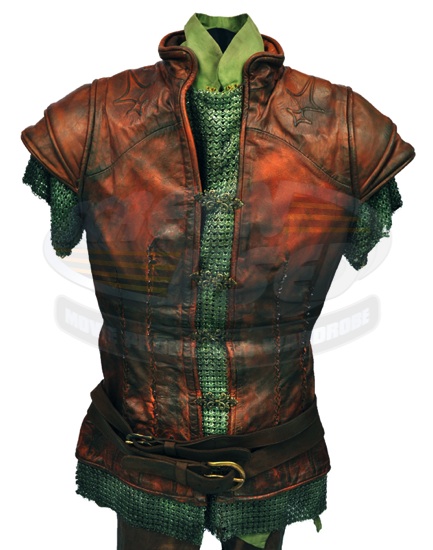One of the first things I do when I get my hands on a new RPG is flip to the equipment section. I learn a lot from the weapons, armors, shields, and sundry gear about the system. I can find out about the encumbrance rules, visibility rules, proficiencies, how deadly combat will be, even how easy it might be to make a wizard in plate mail. The last often being a good judge of how easy it might be to game the system and how well the material was play tested.
I really do love looking at the equipment section of RPGs. I am always a little befuddled by the anachronisms, but I am more crestfallen by how unimportant equipment is most of the time. Especially with weapons one is often times interchangeable with another. Beyond that some RPGs have items with no intrinsic, mechanical value. Pouches, bedrolls, waterskins, most clothing, whetstones, and occasionally even the backpack used to hold all a character’s things. Some items like flint & steel have intrinsic value, the ability to light a torch is very important if the party doesn’t possess a magical means to do so. But many games do not have any rules for proper care or maintenance of battle regalia or everyday items. This makes sewing kits and whetstones useless. They provide no mechanical benefit and their absence incurs no mechanical penalty. Some systems include waterskins, but then don’t say how much water a skin actually holds. Does one waterskin then mechanically mean a PC has infinite water until they have none by whim of the DM/GM? This is the same problem that plagues sacks, bags, pouches, backpacks, flasks, chests… any container really. The truth is I have no idea how much coinage can fit into a belt pouch. I don’t own a belt purse or know the approximate size of the coinage. Is it the size of a US quarter, nickel, dollar coin, larger? If a PC drops/has stolen his purse does he lose all his money, or just some? What about clothing, is it important? Usually no. In my experience most players never purchase a set of clothing in excess of the PC’s ‘My First Adventure’ starter set. The work of making these things important is placed on the person behind the screen. How many times have your adventuring parties approached the local lord or king? Did they bathe, wash and mend their clothes? A person of the nobility might have a very different reception of a group of people who smell like dung, are covered in dirty, bloodstained, and threadbare rags riddled with tears and holes. Spend some of that loot on a fresh set of fine clothing and you will look proper. Just as dictated by modern dress codes for anything like a formal business meeting or job interview. A little effort to look clean and professional can go a long ways. But it would be nice to see those sorts of mechanical benefits actually built into the items rather than decided by a GM winging it.
Concerning of proper attire, learn it. A little research will go a long ways into making your games feel more real and remove 100% optimization of the PCs 100% of the time. It’s little things like people not walking around in heavy armor all the time. While modern discoveries have helped clarify the weight of full plate armor (roughly half of what was once thought) and its restrictiveness (far more mobile) people still did not wear it on a regular basis. Imagine working an active, manual job for eight hours while carrying 50 lbs (approximately the weight of a modern firefighters gear). Now remember that the eight hour work day was instituted centuries later and the average workday was more like 10 – 14 hours. It would be exhausting. Heavy equipment was war regalia. If there was not a high likelihood of severe battle fighters did not wear it. They had lighter armor they would wear if they wanted protection or peace of mind. Heavy armor also took considerably longer to don than light armor. Heavy armor consists of multiple layers, straps, and buckles that all need to be adjusted. Everyday clothing would probably consist of a shirt with a leather tunic, studded gambeson, or padded surcoat over the top.

For general ‘adventuring’ a person might wear a chain shirt with a leather outer layer. He might also wear vambraces and a light helmet that would not weight down the head or restrict visibility.
Well what about the other bits then, weapons and shields? Shields are part of war regalia and are well, heavy. A good shield would weight anywhere between 10 and 15 pounds. It is a lot of weight to carry around on your arm. However many shields, due to their weight, have ways of being slung across the shoulder and carried on the back with relative ease. Just remember, equipping it from a PC’s back is the sort of action that would provoke attacks of opportunity in melee. Shields in general would be strange to carry around during everyday errands but would definitely fit traveling and general adventure work where the chances of being attacked increased greatly.
Weapons can be the tricky spot because it depends largely on the area and its culture. In some places it may be illegal for commoners to own weapons. Weaponry and martial training may be only legal by the nobility. This law can be circumvented by carrying ‘tools’. In other places, especially urban centers, one would be a fool not to have some form of protection. That protection might be anything from professional bodyguard(s), to a single dagger. Some show of blatant defense is usually all that is required to keep away any thieves and outlaws. By their nature such people prey on the weak and defenseless.
So what would a person have for a weapon? Well, swords were expensive just as heavy armor was. It was expensive in a way not reflected in current RPGs. Moreover a sword was the hallmark of a warrior. If someone wore one at his hip it was expected they knew how to use it and well. Swords were difficult to make and required a large amount of good quality metal. From that resource a good smith was needed as a sword must walk a fine balance of strength, flexibility, and the ability to hold a good cutting edge. Masterwork caliber items like swords and mail armor were often given names, bestowed as presents, and handed down through generations. The common person had need for tools, tools that could also be used as weapons. Popular ninja weapons such as the sai, kunai, tonfa, kama, and bo staff all began as farm implements (it was illegal for people below the rank of samurai to own and train with weapons). A common person would always have some sort of dagger or long knife in his belt. A good knife is one of the most important articles for survival and one of the most useful tools in a pre-renaissance world. The second most common weapon is also a tool, the small axe or hatchet. A version of the axe is the oldest tool we have evidence of existing. Any person in a rural setting is likely to have a utility dagger and some sort of hatchet on their person. It’s not a bad selection of weaponry. They can both easily kill a beast or man (even wearing armor), both can be thrown, and are small enough to be wielded at the same time with relative ease.
Other common weapons a person would have around are the staff, club, and sling. All inexpensive and easy to manufacture and have a use beyond being mere weapons. Depending on the culture of the game world a person might also own a spear, or a shortbow. These also have hunting purposes but something like a boar spear would probably be beyond the means of a peasant. But a person who served in a militia might own something of this nature.

Something to remember is that supplies and equipment are only as important in the game as you make it from behind the screen. The important part about changing some of the mechanics of the game like this is making sure to tell your players up front. If they are anything like most players I know the thought of strolling the town’s market in full plate doesn’t even cross their mind. Try to think of how you might feel if shopping at your local store you noticed a handful of people in full tactical gear, assault rifles, and SMGs doing the same. At least for me that would be highly unsettling. Also, players don’t seem to like to do math for some reason. I mean if you don’t like math pen and paper RPGs seems like a weird hobby to me, but I digress. It may behoove you to spend a little extra time at character creation to create a partial second character sheet so there is one with the PC fitted in their adventuring gear, with bonuses, and another representing their everyday gear with bonuses.

Man, there’s a lot of challenging thoughts there for guys like me who – whether in front of or behind the DM screen – let stuff like this fall by the wayside. I guess it’ll depend a bit on the group. I know some players who would love this amount of detail, and I think if done smart, a good portion of players would go along with it. But there have also been many DMs and players who clearly have no interest in keeping track of how many feet of rope a player is carrying, let alone how much water the waterskin holds or how many of those 1,000 gold pieces can fit in a pouch.
Still, if a group is going for a semblance of realism, your post makes great points to consider.
Obviously mechanical minutiae is not for everyone. I don’t care most of the time but if behind the screen I want to deal with a very real and common survival issue such as dehydration, rules systems aren’t usually very helpful for it. As for realism for me it’s about perception, imagining the scene and plopping myself down either as a PC or an NPC and how they might feel in the situation.
My advice for looking to add some small motes of realism to your game is to start small and stay consistent. Pen yourself a reminder note about one detail until you begin remembering it without any reminder.
Good advice, thank you.
“Especially with weapons one is often times interchangeable with another.” true that.
“It was expensive in a way not reflected in current RPGs.” good point
I found PBS’s “NOVA | Secrets of the Viking Sword” an interesting examination of swords of the time period often reflected in Fantasy RPGs. It streams on Netflix and can probably be found in other forms if you want to check it out.
I’ll definitely do that. good looking out
Pingback: On nominations and our epic future! | Epic Heroes
I’ve nominated you for a Sunshine award! I’m trying to help new and old bloggers that write about dungeons and dragons. I’ve just started my own blog called Epic Heroes. In any case, here’s the article I featured you in! Hope you like it <3 http://epicheroesonline.wordpress.com/2013/12/13/sunshine/